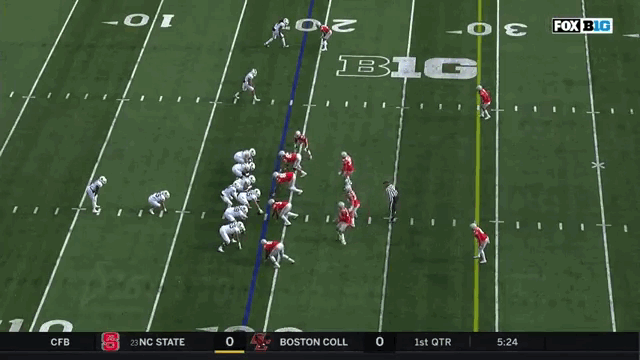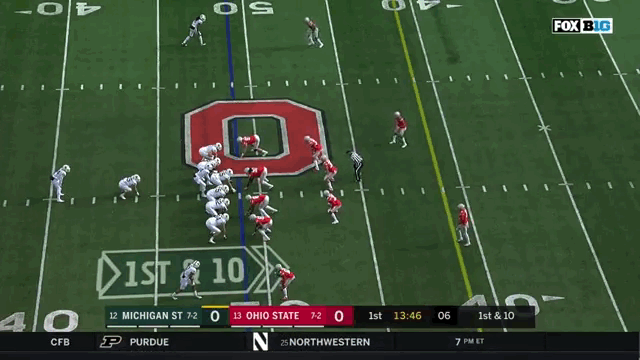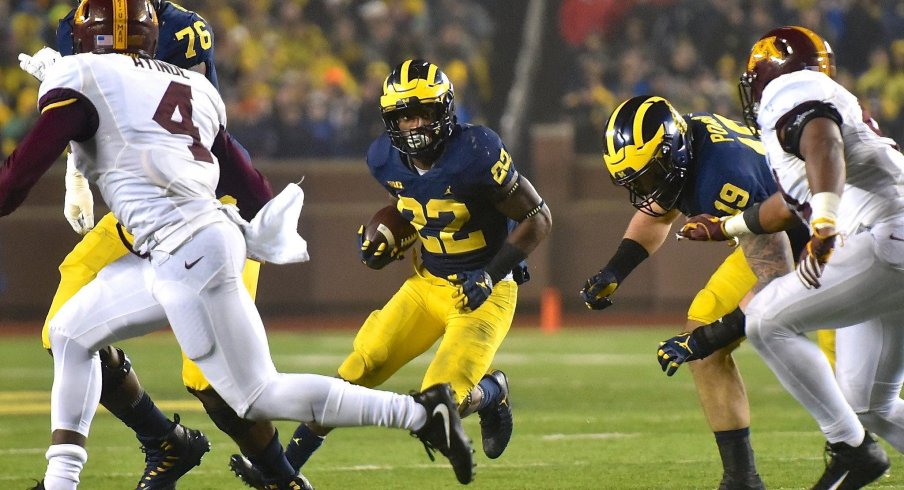Three-star in-state linebacker CJ Sanna commits to Ohio State.
"Their tailback's an outstanding player, and their interior offensive line is really, really good," Urban Meyer said of the Michigan running game during this week's Big Ten coaches teleconference.
Despite starting the year 4-0 before a veritable monsoon led to their first loss of the season, few observers (this author included) truly believed this year's Michigan offense had the playmakers necessary to contend for a Big Ten title. After injuries claimed the seasons of starting quarterback Wilton Speight and receiver Tariq Black, who had emerged as the team's top playmaker, Jim Harbaugh's offense began to sputter and the Wolverines failed to top 13 points in any of their three losses thus far.
As Harbaugh's QB carousel continues to spin with John O'Korn likely getting the nod as they welcome Ohio State to Ann Arbor, many expect the maize and blue defense to be the ones tasked with keeping The Game close. But although Urban Meyer and the OSU offensive brain trust are undoubtedly worried about slowing the aggressive approach of UM defensive coordinator Don Brown, Buckeye defensive coordinator Greg Schiano still has plenty of his own to worry about.
While the Wolverines have struggled to connect on many big passing plays this fall (ranking 102nd nationally in completions of 10+ yards), the physical ground game for which Harbaugh originally became famous while at Stanford has reappeared. Specifically, running back Karan Higdon has blossomed in the second half of the season, rushing for 200 yards against both Indiana and Minnesota while adding 158 more against Rutgers.
As shown in the highlight above, Higdon is a patient runner who waits for holes to develop before showing a good burst to separate once in open space. Since he's not the kind of back that can run through arm tackles at the line, offensive coordinator Tim Drevno gives him plenty of protection in the form of a fullback, two tight ends, and often a pulling guard (as seen in the Power-O concept executed above) that punishes opposing defenses.
Of course, they brought that same philosophy to Ohio Stadium last November, and the Buckeye defense routinely stuffed a unit many consider more talented than this year's iteration. Despite tallying 43 carries in last year's contest, the Wolverines managed only 91 rushing yards against a front seven that returns every starter but one: middle linebacker Raekwon McMillan.
While such personnel groupings may seem predictable in today's age of spread-em-out football, the intricacies of defending such attacks are often taken for granted, and despite their success against them the year prior, Ohio State defenders have already been bitten by that bug this season. Iowa ravaged the Buckeye defense with a heavy, I-formation running game that sprung Hawkeye running backs for 239 yards as OSU linebackers were regularly caught out of position while trying to fill the gaps presented by Iowa's extra blockers.
One week later against the similar, I-formation offense of Michigan State, those same Buckeye defenders proved far more capable, stuffing lead blocks from fullbacks or pulling guards and re-directing ball-carriers into the waiting arms of a teammate.

But Ohio State's problems with defending 21 (2 backs, 1 tight end) and 22 personnel (2 backs, 2 tight ends), have had far more to do with alignment and communication than technique. Linebackers Chris Worley, Tuf Borland, Jerome Baker, and Malik Harrison have shown they aren't afraid or incapable of taking on bigger blockers, but they've struggled to all be in the right places when their opponents look to run the ball.
This has been particularly apparent when opposing offenses shift or motion a tight end, flipping the strength of a formation just before the snap. Even in last week's dominant win over Illinois, the Illini found some success on the ground by utilizing this strategy:
There is no schematic wrinkle that Schiano must add this week to counter such looks. In fact, it may be the exact opposite.
In both games since the Iowa debacle, the Ohio State defense has been noticeably more vanilla, simplifying the game plan and removing complexity. While adding a strong safety blitz here or a Tampa-2 coverage there may keep the offense on its toes, they often make things harder for the defense itself, as players are forced into unfamiliar positions and techniques, left thinking on the fly instead of reacting with confidence.
As Illinois showed by simply flipping from a heavy formation with two tight ends to the boundary into a balanced I-formation with a tight end on either side, the Buckeye defense didn't properly adjust and the Illini runner found a big hole on the right side both times. By simplifying the play-call to basic coverages, the Buckeyes are more likely to know how to react on the fly as they're more likely to feel comfortable with their assignment no matter the offense's alignment.
But Schiano needs help from his studs up front as well. While star ends Nick Bosa and Sam Hubbard both made big plays when the Illini tried to run the ball from shotgun looks last week, interior linemen like Dre'Mont Jones, Tracy Sprinkle, and Robert Landers must make their presence felt in the Michigan backfield. Even if they don't make the tackle, interior penetration throws off the path of pulling guards, freeing up linebackers to make tackles while altering the path of the ball-carrier.

As Meyer mentioned in his press conference this past Monday, there are no secrets between these two rivals, and Harbaugh agreed. Michigan will undoubtedly look to establish their inside ground game with an unbalanced line or motioning in and out of sets with three tight ends to one side in hopes of confusing the Buckeyes.
Not only will that keep the Wolverines out of third-and-long situations, where they've struggled mightily this fall, but it will help open up one of the few strengths of the maize and blue offense: play-action passes to the tight ends. While none possess the athleticism of Iowa's Noah Fant, five Michigan tight ends have caught passes this year with 13 completions of 15 yards or more.
This expansive crew of oversized targets will give O'Korn a number of ways to attack Ohio State's pass coverage between the numbers, just as Iowa did with Fant and backup tight end T.J. Hockenson, who roasted the Buckeyes with 5 catches for 71 yards and two touchdowns. O'Korn's play has been lackluster overall this year, but he's been at his relative best on manageable third downs, converting 50% of those with six yards or less to gain, while seeing that number nearly cut in half to 28% when the line to gain is seven yards away or more.
Harbaugh's recipe for success depends mightily on his offense picking up yards on first down to keep O'Korn in position to make manageable throws on third and extending drives. That then transfers the pressure over to the Ohio State offense, who must make plays in limited opportunities against the tough Michigan defense.
Though not explosive, this strategy may be the difference between an authoritative Buckeye victory like the one we saw two years ago, and the close battle witnessed last year. Will the Ohio State linebackers be up to the task?



